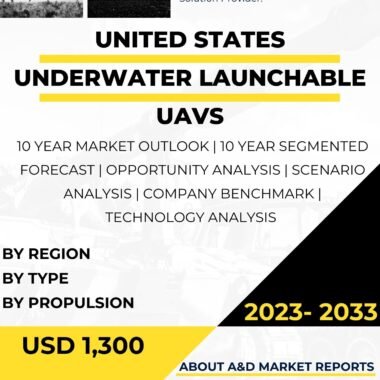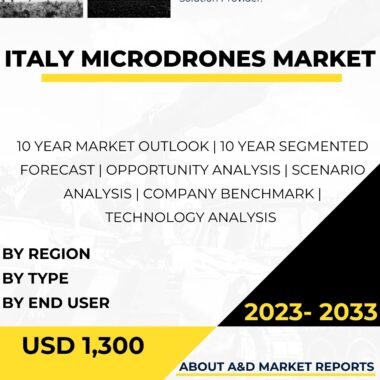Description
Germany microdrones market has been experiencing significant growth and technological advancements. Microdrones, also known as unmanned aerial vehicles (UAVs) or drones, are small, unmanned aircraft that can be piloted remotely or operate autonomously. These micro-sized drones have become increasingly popular in various industries and applications due to their versatility, ease of use, and cost-effectiveness.
The Germany microdrones market has witnessed increased adoption across different sectors, including agriculture, surveying and mapping, infrastructure inspection, environmental monitoring, and public safety. In the agricultural sector, microdrones are used for crop monitoring, precision agriculture, and the assessment of crop health and yield. These drones can quickly and efficiently survey large farmlands, providing farmers with valuable data to optimize crop management and improve productivity.
In the surveying and mapping industry, microdrones offer a faster and more cost-effective alternative to traditional surveying methods. Equipped with advanced sensors and high-resolution cameras, microdrones can capture detailed aerial imagery and create accurate 3D maps and models of terrain, buildings, and construction sites. This technology has proven invaluable in urban planning, land development, and infrastructure projects.
The Germany microdrones market has also seen significant applications in infrastructure inspection and maintenance. Drones equipped with cameras and sensors can access hard-to-reach areas, such as bridges, towers, and power lines, to assess structural integrity and detect potential defects or damages. By conducting aerial inspections, microdrones help ensure the safety and reliability of critical infrastructure assets.
Environmental monitoring is another important application of microdrones in Germany. These drones are used to assess environmental conditions, monitor wildlife, track changes in ecosystems, and conduct research in remote or sensitive areas. Microdrones equipped with specialized sensors can collect data on air and water quality, temperature, and other environmental parameters, contributing to environmental protection and conservation efforts.
Furthermore, microdrones have proven to be valuable tools in public safety and emergency response operations. Law enforcement agencies and search and rescue teams use microdrones to conduct aerial surveillance, locate missing persons, and assess disaster-affected areas. The real-time data and situational awareness provided by microdrones aid in decision-making during critical situations, improving the effectiveness of emergency response efforts.
Germany’s strong aerospace and engineering industry have been instrumental in driving the growth of the microdrones market. The country is home to several leading drone manufacturers and technology providers, as well as research institutions focusing on drone development and applications. This expertise has positioned Germany as a key player in the global microdrones market, with the ability to offer cutting-edge solutions to various industries.
Moreover, the Germany microdrones market has benefited from supportive regulatory frameworks and initiatives. The German government has been proactive in developing regulations and guidelines for drone operations, ensuring safety and privacy while promoting the responsible use of drones in various applications. These regulations have fostered a conducive environment for drone innovation and adoption.
Challenges faced by the Germany microdrones market include concerns related to privacy and security. As the use of drones becomes more prevalent, there are increasing concerns about potential privacy violations, especially when drones are equipped with cameras or sensors. Addressing these concerns and ensuring compliance with data protection regulations is essential to maintain public trust and confidence in drone technology.
Additionally, the integration of microdrones into existing airspace and air traffic management systems poses technical and operational challenges. Ensuring the safe integration of drones into the national airspace requires collaboration between drone manufacturers, aviation authorities, and other stakeholders.
In conclusion, the Germany microdrones market has experienced significant growth and adoption across various industries and applications. The versatility, ease of use, and cost-effectiveness of microdrones have made them invaluable tools in agriculture, surveying, infrastructure inspection, environmental monitoring, and public safety. With Germany’s strong aerospace industry and supportive regulatory environment, the country is well-positioned to continue playing a prominent role in the global microdrones market. As technology continues to advance and applications expand, microdrones are expected to have an increasingly transformative impact on various sectors, driving efficiency, innovation, and safety.




